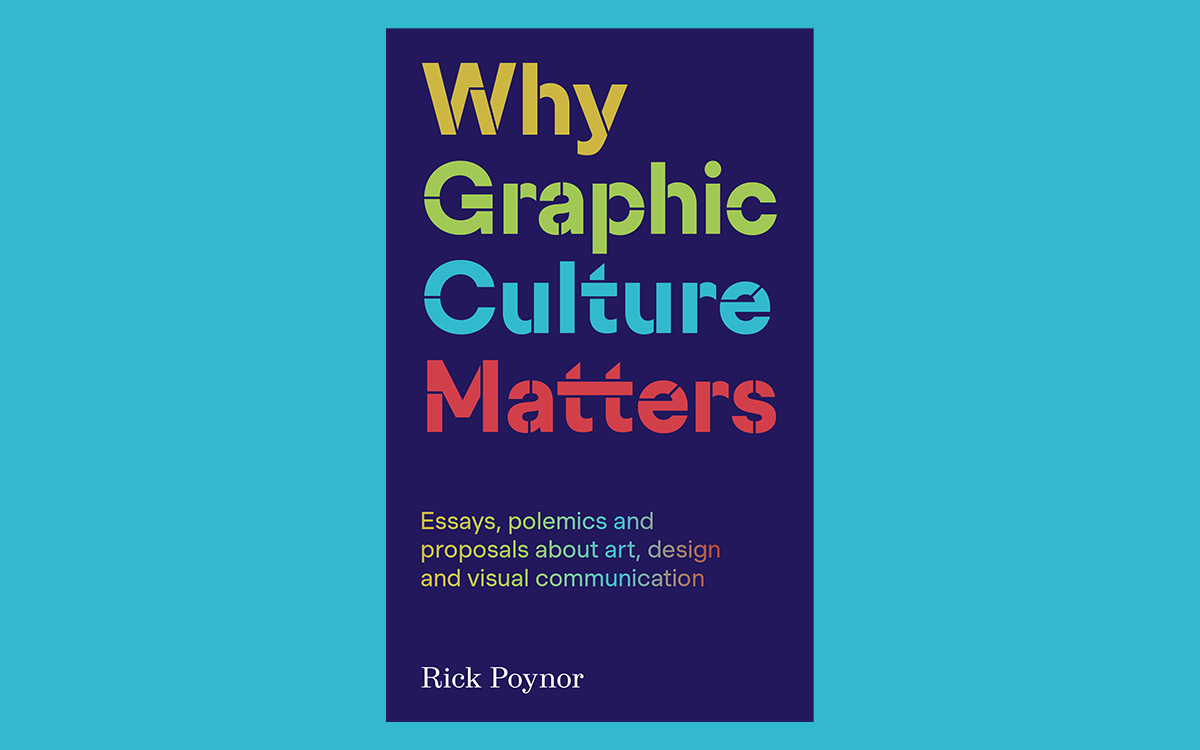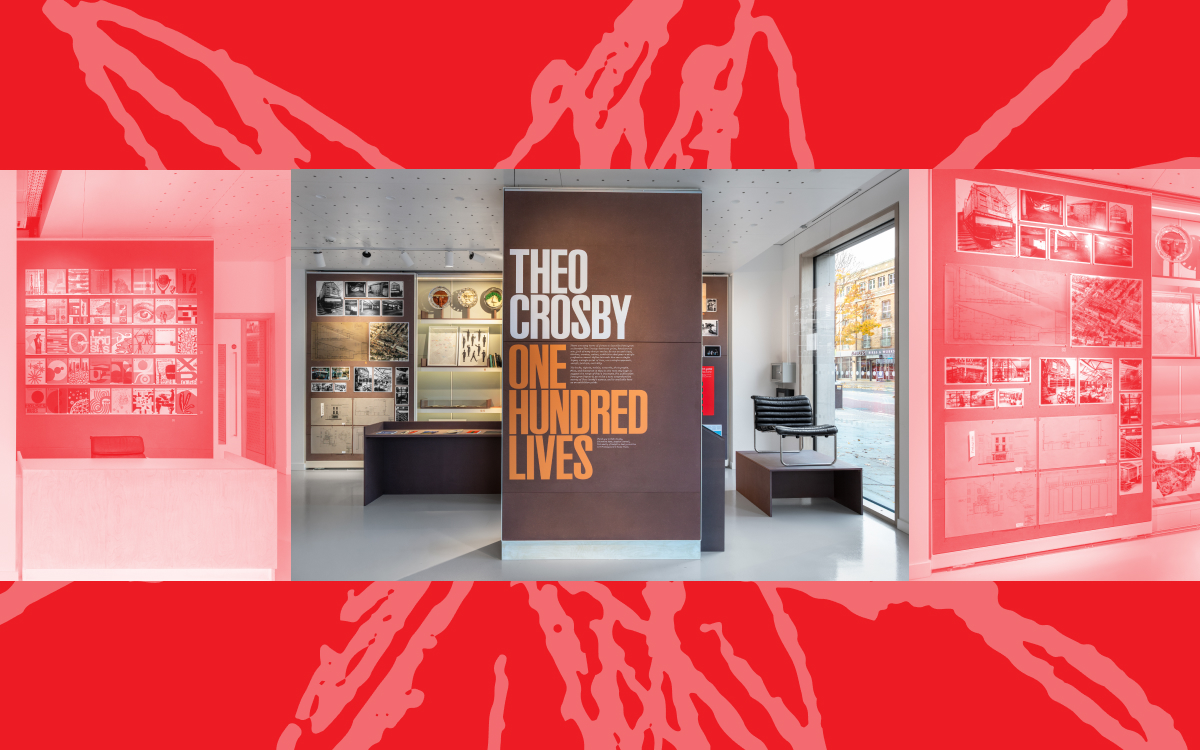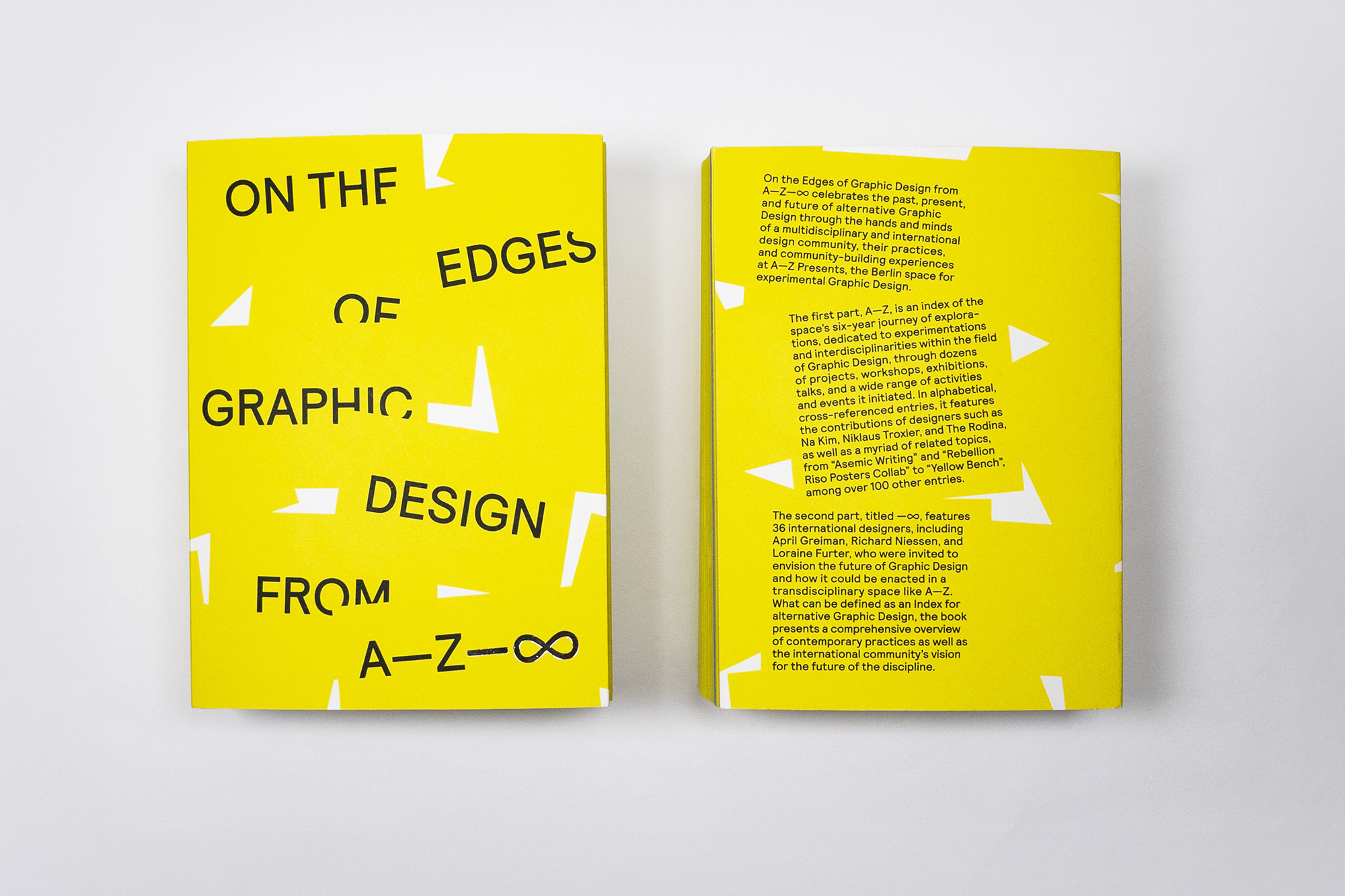This essay is included in Rick Poynor’s new book, Why Graphic Culture Matters, available now from Occasional Papers. It was originally published in Print magazine in October 2011. It’s republished here with permission from the author.
I am in a darkened room queuing behind other people at the back of a building that was once an air-raid shelter in Amsterdam’s Vondelpark. We have been instructed to pick up a torch from a basket and look around, but there are so many people pressed into the small space that all the torches have already been taken. I can see sheets of paper on the wall with mysterious rectilinear markings and I’m brushing against clothes on hangers suspended from the ceiling. At the back, there is a laptop showing pages from a book – it’s hard to read at a distance in the gloom. Some kind of street protest is playing on a video monitor behind me near the entrance. I have no idea what to make of all this, and even if I had a torch and could linger, I’m not sure it would make much difference.
This multimedia installation, which took place in July 2011, was part of the graduation show for the Sandberg Institute’s MFA design course. Annelys de Vet, a Dutch designer, heads the programme, and Daniel van der Velden of Metahaven is a tutor on the course. Seven designers were graduating, all women, and each student had put together a display.
The darkened room was devised by Anja Groten, a German student, and it represented a group of activists she called the Invisible Operators. We had been warned that these anonymous figures might be present among us in the room, though they wouldn’t make themselves known. It was only the next day, in the student presentations, that it became fully clear that the project was about squatting in empty buildings in Amsterdam, which was made illegal in October 2010 after years of tolerance by the authorities. The enigmatic markings, to be inscribed by hand on the cement between bricks, were a secret code by which the clandestine “operators” broadcast messages, bypassing phones, email, social media and other traceable forms of digital communication.
I single out this event because I happened to take part in it – I was invited to join the graduation jury – but in many ways Groten’s challenging installation was no more than one might now expect from an MFA course in graphic design, or a graduation show. Graphic design stopped looking like graphic design, as we once knew it, several years ago. Of course, one can still find posters and pieces of print to admire, but no self-respecting student at master’s level pays hefty tuition fees and prolongs her education to end up looking like a throwback; graphic communication, as it once was, is no longer the inevitable focus of designers’ thinking or concerns.
In a previous article, I questioned many graphic designers’ apparent lack of interest in visual form, arguing that design without a concern for the “graphic” is cutting off its nose to spite its face, and risks ending up with not much of an identity at all. But this complaint takes it for granted that since the field once existed as a clearly defined activity (and identity), it should continue to exist in that form. Let’s not forget, too, that even in its heyday, with a secure professional identity and consistent visual outcomes, graphic design always struggled to achieve external recognition of what it was and why it was significant. The point was often made in rueful anecdotes from designers who found themselves at a loss to explain to a doubtful relative quite what they did for a living.
The other students’ projects in the Vondelpark were equally broad in their interpretation of graphic design. One took the form of a performance by an actor pretending to be the president of the Chimerican Union, a notional marriage of China and the US. He addressed us from the podium in tones of extravagant satire while a couple of women in nurses’ uniforms – one of them the student, Lauren Grusenmeyer – shouted support and tried to inflame the crowd. The banners and placards were certainly graphic but secondary to the symbolic concept and writing. Later, Janneke de Rooij, a student concerned with the public’s stereotypical views of Africa, attempted to subcontract the design problem by encouraging the audience to workshop graphic messages using texts and supplied pictures. A third student, Maartje Smits, showed documentaries. Her charming onscreen presence, entertaining writing and compelling voice-over suggested she might have the makings of a future Miranda July: writer, storyteller, visualiser and filmmaker.
The next day, at the presentations, Smits was introduced as a poet, which she also is, and she openly stated her plan to be an artist. Afterwards, in a jury meeting with the MFA tutors, I asked what any of this had to do with graphic design, posing the question from the perspective of the old, fixed view of the discipline – it is, nevertheless, the natural thing to ask. Rob Schröder, a tutor and a former member of the radical design team Wild Plakken, argued that students such as Smits, a graduate of the Rietveld Academy’s “Language and Image” course, are perfectly suited to the design MFA. (It’s worth noting that Schröder’s career spans graphic design and documentaries.) He wasn’t specific, perhaps because he is too fully immersed to separate the elements anymore, but I can understand his point of view. I have met many people in graphic design who might just as easily have studied art, photography, digital media or film and whose interests span all these activities – as mine do – without drawing strong distinctions between them.
More than anything, these distinctions are devices of disciplinary convenience. There was a period from the 1930s to the 1990s when the idea of the “graphic designer” as a term of professional self-definition and identity took hold and flourished. This required graphic designers to argue, often vehemently, that design was something quite different from art. Strong as the case might be, it was never entirely convincing because many designers continued to produce work that couldn’t be so neatly classified. Even so, the legacy of this drive to construct graphic design as a discipline can be seen in the ubiquitous support structure of professional organisations, competitions, magazines, history books and conferences, and the vast number of degree courses offering instruction in how to become a graphic designer. Plenty of designers still do something recognisable as this job description, but everyone’s workload is broader now, and design’s vanguard has moved to a more open and less definable location – a place that looks more like what we see going on at the Sandberg Institute.
It was hard, though, to imagine any of these graduates ever choosing to work in packaging or branding. In their final essays, which I had the chance to read, they showed an intellectual grasp of critical issues in contemporary culture that better suits them to a future engaging in research, initiating their own projects, teaching, curating exhibitions, and creating hybrid forms of communication that draw on their skills as writers, editors, conceptualisers and form-givers. Yes, it does sound close to art, since artists engage in similar activities and the design MFA explicitly sets out to develop individuals with a strong personal position and voice. As design evolves, there is a need throughout higher education to rethink some no longer black-and-white aspects of the art/design relationship.
As an observer and writer, I naturally find myself in the same volatile and ambiguous position as those I study, and so, like some of the people formerly known as graphic designers, I cast about for a more protean term to describe my interests. “Visual communication”, “visual culture”, “communication art”, and even “language and image” are closer to the nub, though old-school “graphic design” might sometimes still be part of the visual mix, or the glue that bonds everything together. Graphic design was always a place where interdisciplinary interests could find a home and one can view recent developments as an inevitable fulfilment of the field’s implicit potential. For this kind of work, though, “graphic design” has become an outmoded and even misleading term. We need a sharp new name to convey the purpose, contribution and identity of an expanded, integrative, transmedia discipline of communication and expression.
This essay is included in Rick Poynor’s new book, Why Graphic Culture Matters, available now from Occasional Papers. It was originally published in Print magazine in October 2011. It’s republished here with permission from the author.




